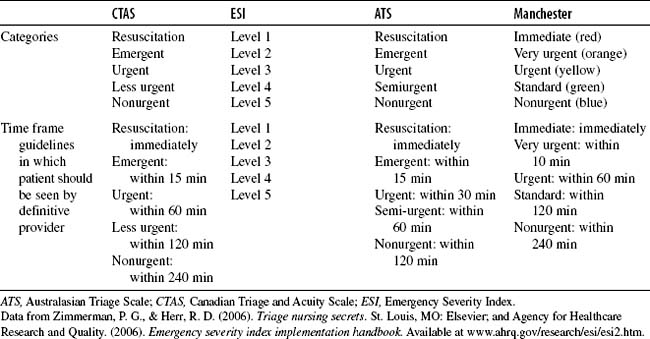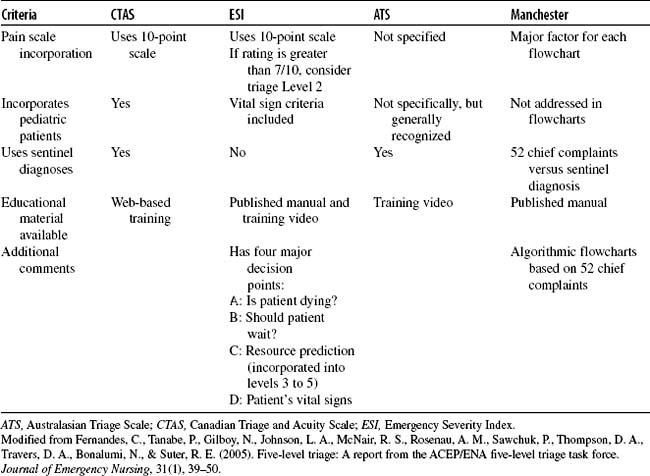CHAPTER 2 Triage
Triage is an information-collecting and decision-making process. It is performed in order to sort injured and ill patients into categories of acuity and prioritization based on the urgency of their medical or psychological needs. Triage begins when the patient enters the emergency department and is performed either in a specified location or at the patient’s bedside. It is a dynamic process; patients’ priorities may change as their conditions stabilize or deteriorate. Triage assessment and assignment of an acuity rating do not fulfill the legal requirement of the patient’s receiving a medical screening examination (MSE) under the United States Emergency Medical Screening and Active Labor Act (EMTALA [see Chapter 44]).
I. TRIAGE OVERVIEW
C. Assessment
2. “Across-the-room” assessment
4. Objective data collection (see Chapters 1 and 31)
D. Acuity Rating Systems
1. Common types of rating systems
F. Treatment and Diagnostic Testing
G. Decision-Making Process
1. Scientific evidence is lacking that demonstrates how triage nurses make acuity rating decisions. It is believed to be based on the following:
H. Interfacility Transfers
1. Emergency departments receive transfers from health centers, other hospital emergency departments, nursing homes, and other long-term care facilities as a result of
2. Transfer patients should have triage assessment performed on arrival to the emergency department
3. Other considerations of transfer patients
II. ADDITIONAL TRIAGE RESPONSIBILITIES
A. Waiting Room Management
1. Triage nurse is clinically and legally responsible for patients in waiting room
4. Initiation of patient teaching
B. Communication Issues
3. Dealing with upset patients, families, or visitors (service recovery)
5. Arrival of families of critically ill or deceased patients





